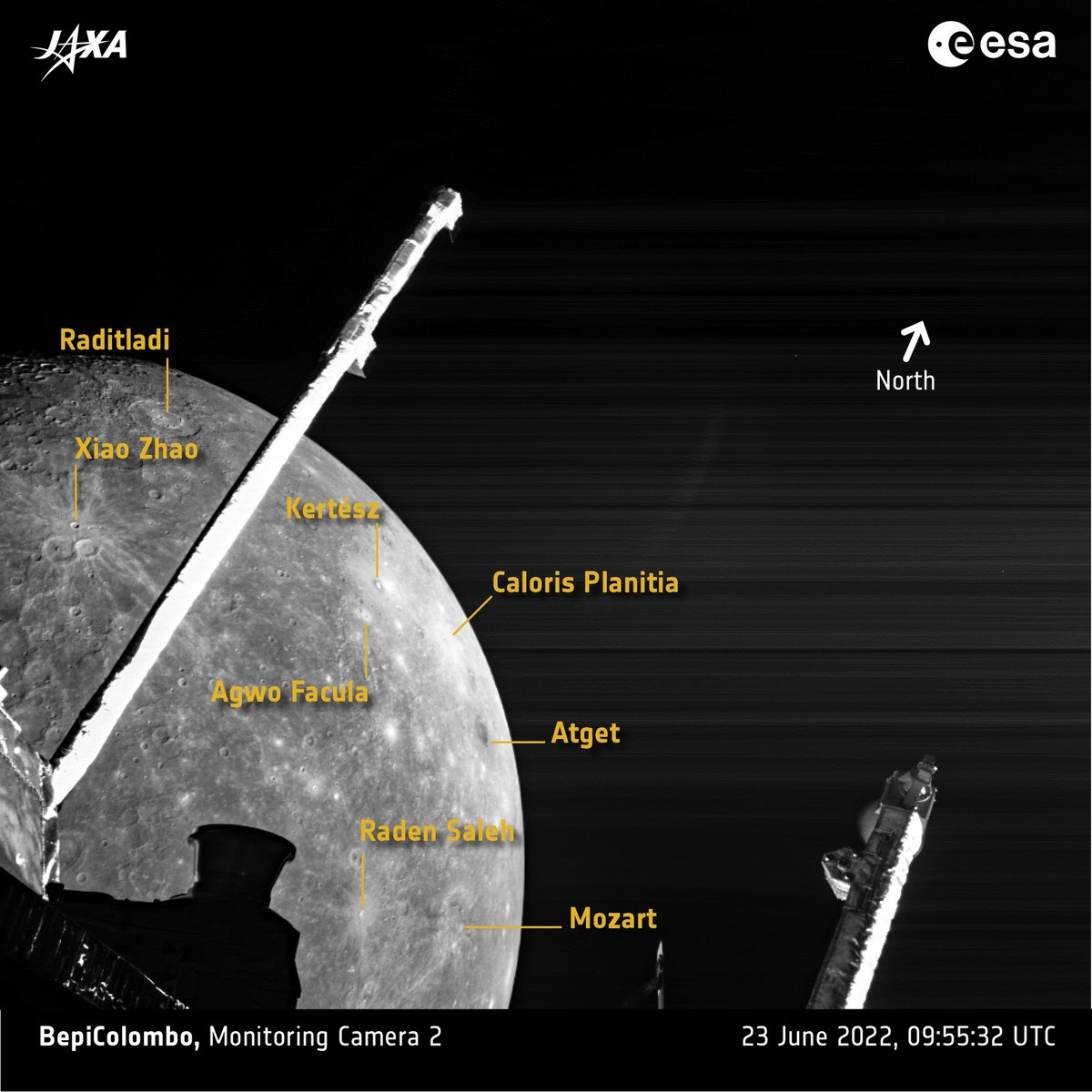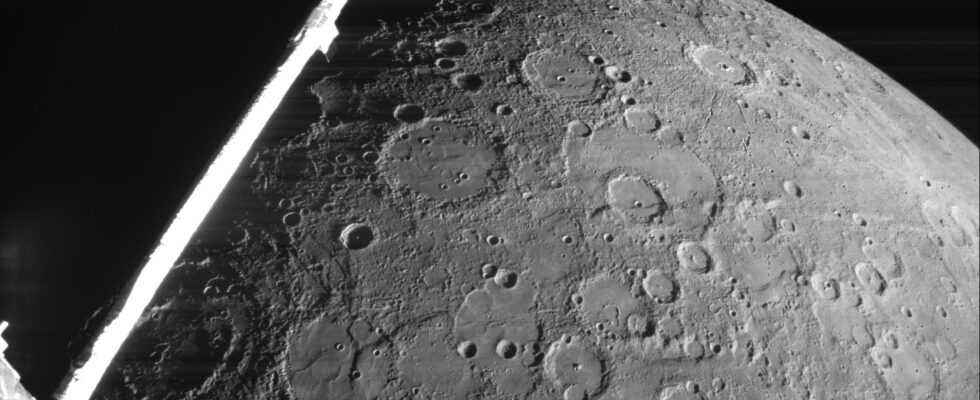It is already the fifth time that the BepiColombo mission flies over a planet to slow down! A gravity assist only 200 km from the surface of Mercury which also allows the instruments to prepare their future readings… And offers a feast for the eyes, with a planet very little visited!
The next overflight will only take place in a year.
Mariner 10, MESSENGER, then Bepi…
The objective is getting closer for BepiColombo… But there are still three and a half years of travel and braking before being able to fit into Mercury’s orbit! In December 2025, the mission will leave its travel configuration, ejecting the Japanese orbiter Mio and the European probe MPO (Mercury Planetary Orbiter), which will remain a little more than one Earth year around the planet closest to the Sun.
A long journey to observe Mercury, which has been studied very little closely so far: Mariner 10 flew past it three times in 1974 and 1975, then NASA’s MESSENGER orbiter made its measurements from orbit between 2011 and 2015…
But there are still a lot of questions to which BepiColombo should provide its share of answers, whether for in situ measurements around the planet to understand its magnetic environment and its exosphere, or for surface measurements with high resolution imagers and l identification of its fine composition.
Mercury has been so little visited so far that even the flybys of BepiColombo bring their share of important data… And this while a majority of the instruments will remain folded up and/or hidden until 2025.
Beautiful images, waiting for better
The images shared with the public of this second flyby of Mercury (the probe has already flown over the Earth, then Venus twice, and Mercury last October) come from so-called “engineering” cameras. These small units are specialized in observing, after take-off, the deployment of the main antennas (which makes it possible, in the event of a problem, to quickly identify the cause).

This explains in particular the framing and the image quality, which is not quite what one would expect from such a sophisticated probe… But which is only a “free” taste provided by the assignment ! As can be seen in the pictures, ground crews had no trouble identifying Mercury’s main craters in these images.
Brake, brake, and brake again!
Thanks to this close flyby, BepiColombo used Mercury to slow itself down to almost 4,700 km/h (1,300 m/s), and significantly lower its orbit. But the mission is not yet sufficiently aligned with the orbit of the small planet, and the difference in speed is significant. It will take four more flybys in June 2023, September and December 2024, and then January 2025 before the probes and Mercury finally meet.
In the meantime, the teams are preparing with the data from the overflights, and are doing everything possible to ensure that by 2025, the mission will be as productive as possible!
Source : ESA

1